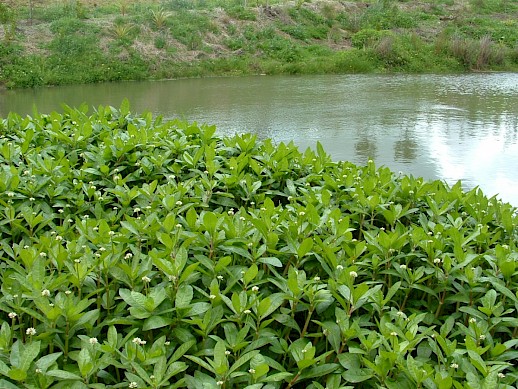Elephants and Alligators
Usually when we think about ‘pathways’ of weed spread, the things that first come to mind are birds, wind, water and humans.
When it comes to alligator weed, that insidious invader of pastures, wetlands and waterways, the usual suspects include contaminated hay and silage, movement of soil, and fragments shifted around on machinery.
And now you can add circus elephants to the list - or more precisely, their poo!
About 60% of pachyderm poo, apparently, is made up of undigested feed - in other words, more than half of what goes in one end comes out unprocessed the other. And when the elephant has access to hay and silage contaminated with a something like alligator weed - which can grow from small fragments of stem - you have a jumbo problem dumped in steaming piles whenever the circus comes to town.
One Waikato landowner found this out, years after the circus had left town, when alligator weed was spotted on his property by a weed-aware spray contractor. Turns out that it was more than a small patch, too, with almost 4 hectares infested from an original application of elephant dung five years before. The regional council is now on the job treating this site - and checking out other circus stops around the Waikato just in case.
Alligator weed is not new to the Waikato, but it is certainly not common. Many of the sites that have been found over the last few years (and subsequently controlled or eradicated) were chance finds by folk who recognized this weed and reported it, or didn’t recognize it but raised the alarm as they didn’t like the rapid, invasive way it was spreading.
Better safe than sorry - if in doubt, report that weed that you don’t like the look of.
It might be nothing, it might be something, but it is always best to check it out!
